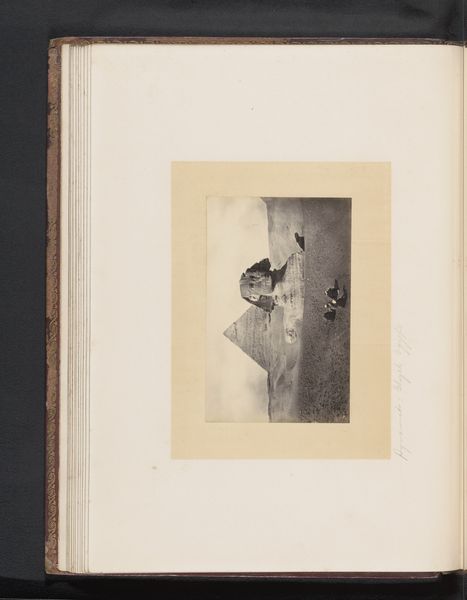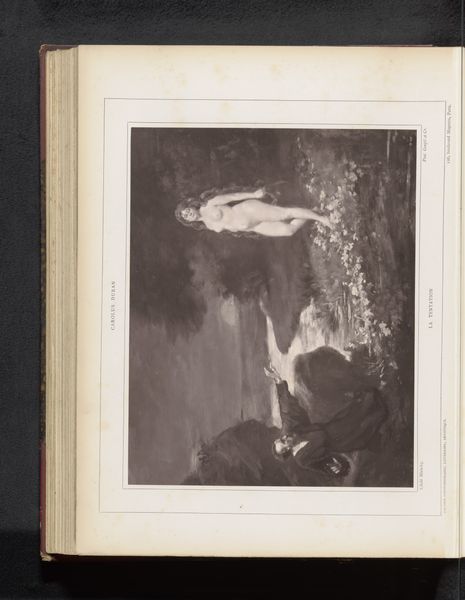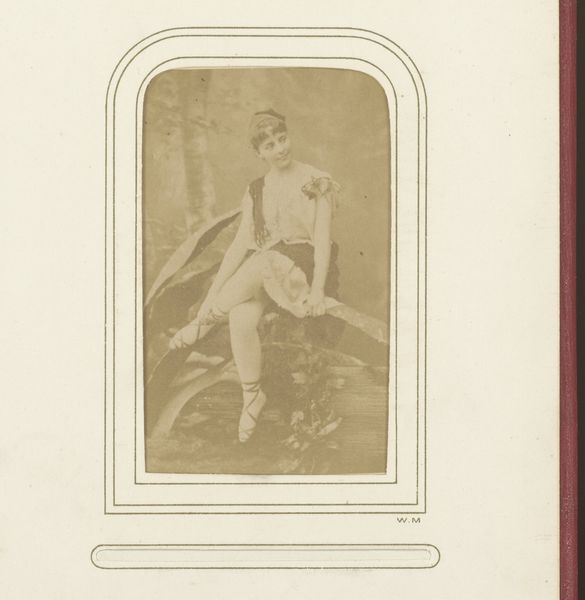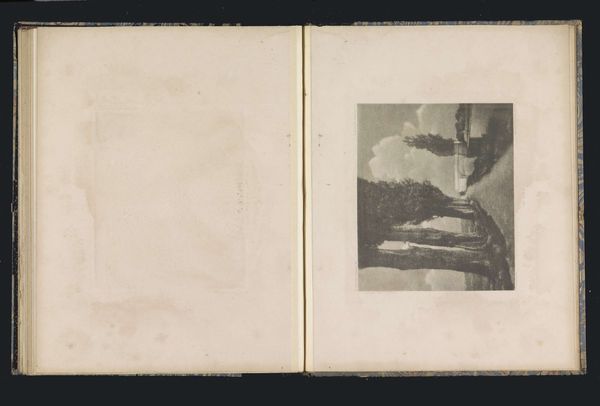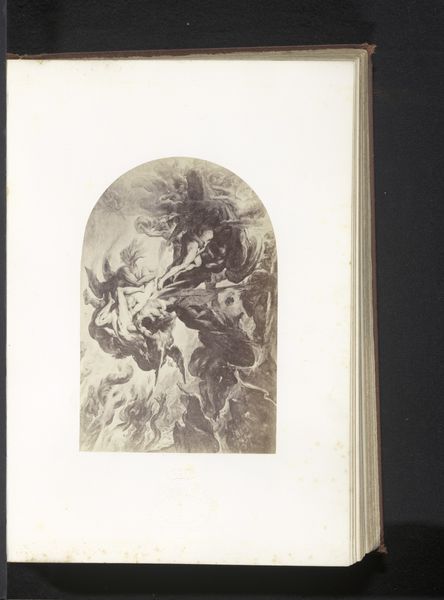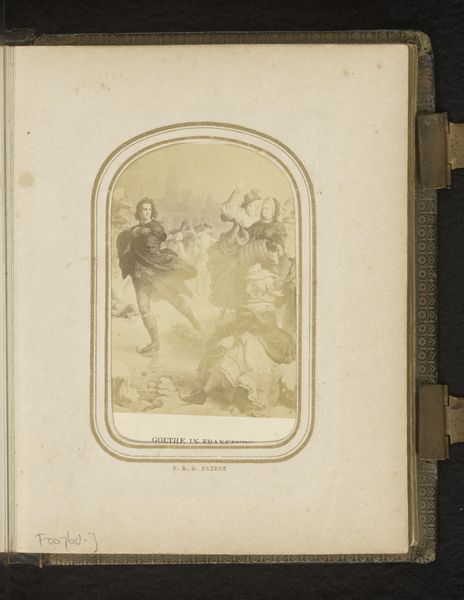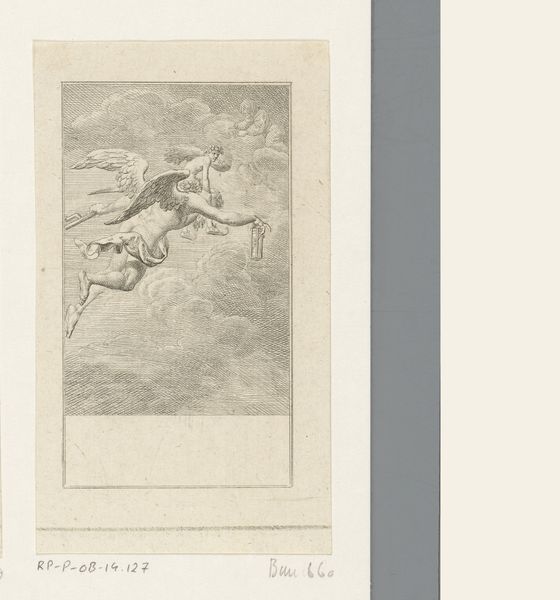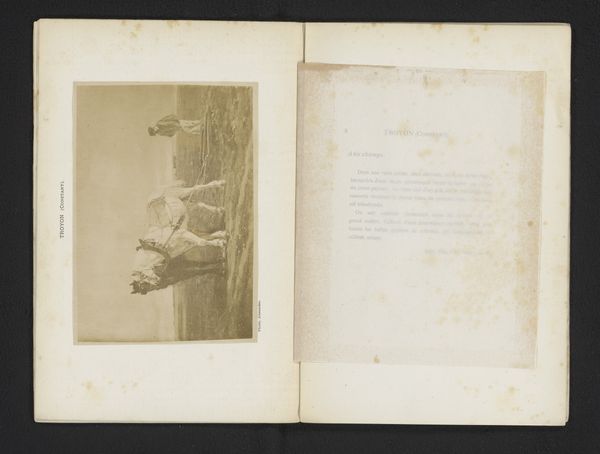
Dimensions: height 81 mm, width 49 mm
Copyright: Rijks Museum: Open Domain
Curator: What an interesting image to contemplate. This is a photographic reproduction of "Der Rettungsfelsen" ("The Rock of Salvation"), dating from between 1860 and 1880, after the painting by Johannes Adam Simon Oertel. Editor: The first thing that strikes me is its starkness. It feels very staged but simultaneously very desperate, all that churning water contrasting the stillness of the rock. It makes me think about the manipulation inherent in early photographic processes. Curator: Indeed, the gelatin-silver print medium itself is significant. It democratized image production, making reproductions like this more accessible to the public. That, in turn, shapes the narrative's reach, and religious and historical themes had great cultural relevance. Editor: Yes, but even reproduced, the act of photography involved darkroom techniques and careful choices. I see a very constructed scene, almost like a set design – the strategic use of light and shadow on the cross itself. Was it built for this photo? What are the real, tangible processes involved? Curator: Interesting point. What if the cross and figures aren’t literal representations? It embodies themes deeply rooted in cultural consciousness: salvation, the individual's struggle against powerful forces, and the refuge found in faith and the symbolic power of the cross. The rays from the top suggest divine intervention. Editor: All well and good, but the surface reality begs so many questions! Who were the models, how long did they have to hold these poses in that fabricated torrent, and what commentary was being made on social hierarchy? Curator: Ultimately, the piece speaks to how artists deployed both artifice and material in a combined process to present compelling spiritual symbols and historical themes. We can feel the lasting echo that art has within culture itself. Editor: Perhaps, in dissecting this work's method of production, we can understand that images can have multiple, equally valid narratives, all created by the hands that labored behind them, so to speak.
Comments
No comments
Be the first to comment and join the conversation on the ultimate creative platform.
